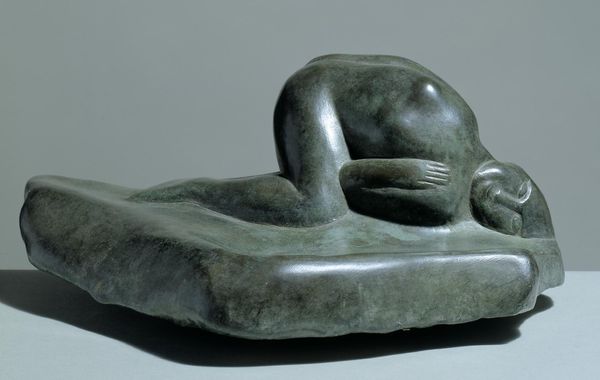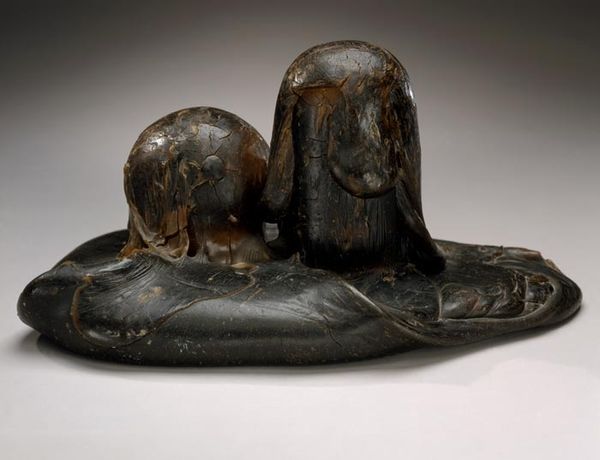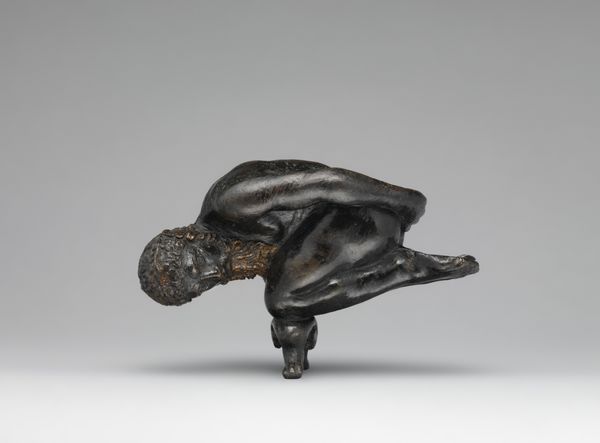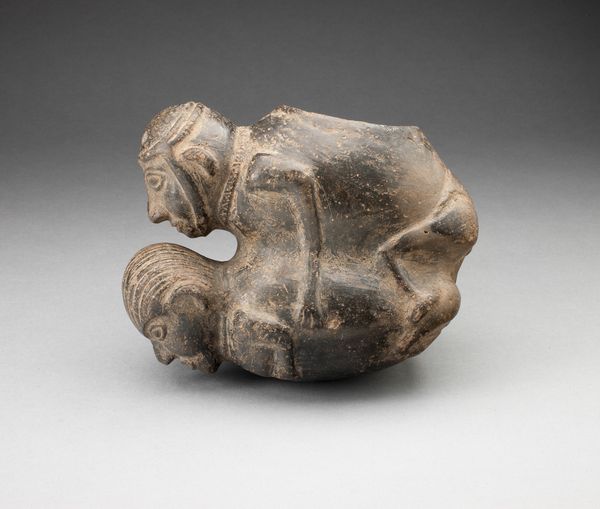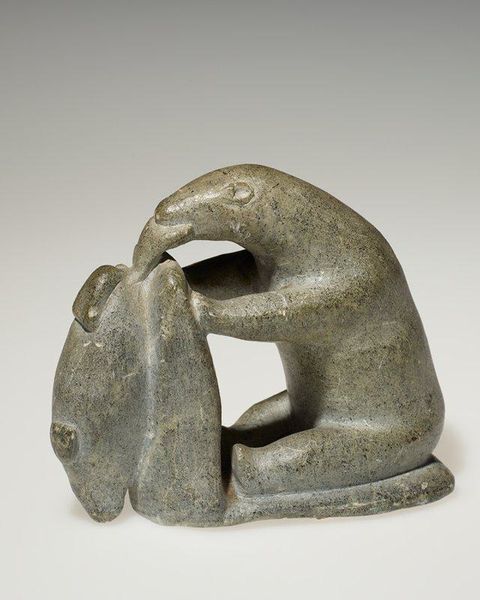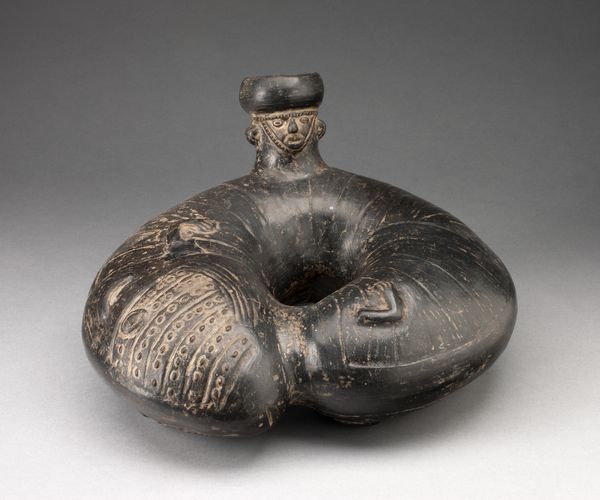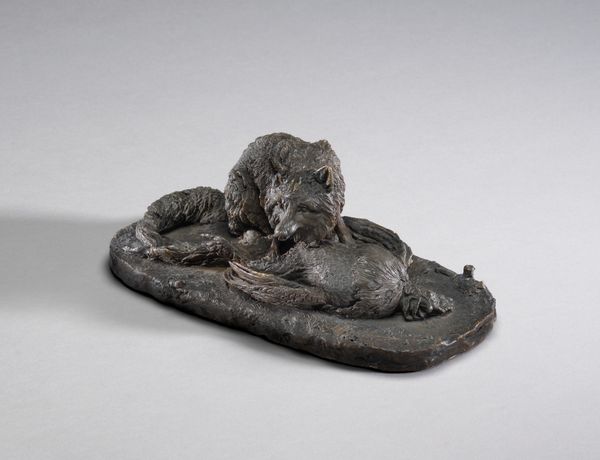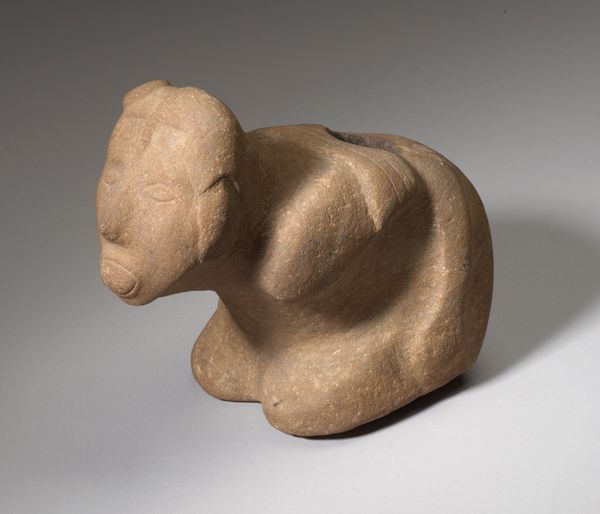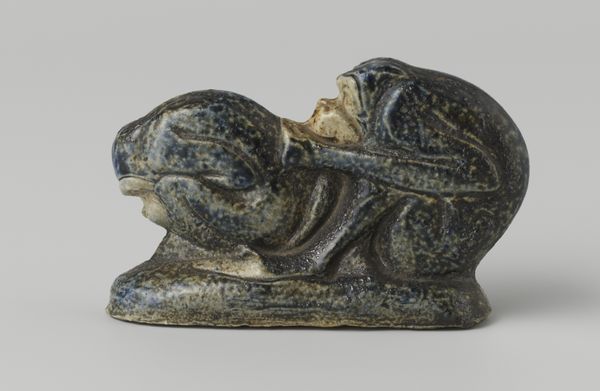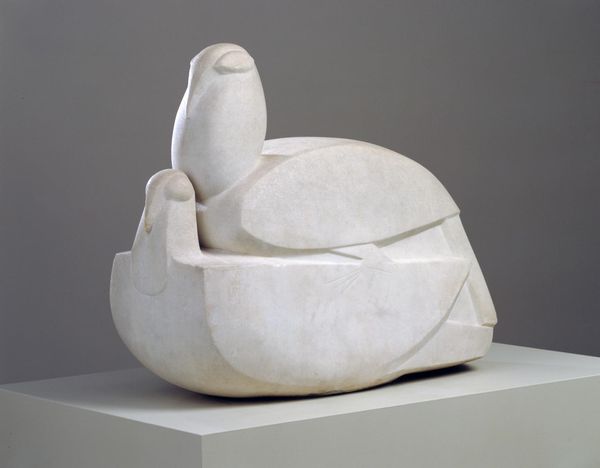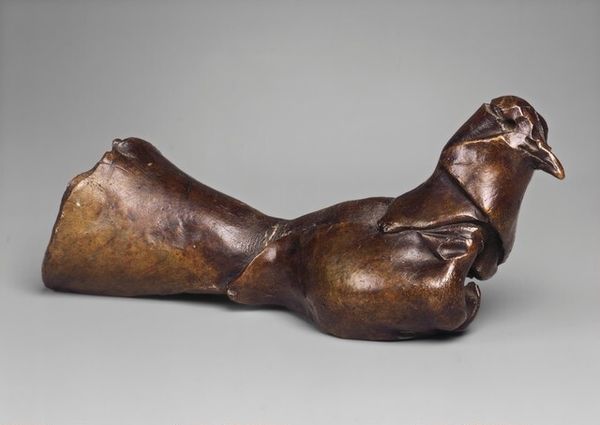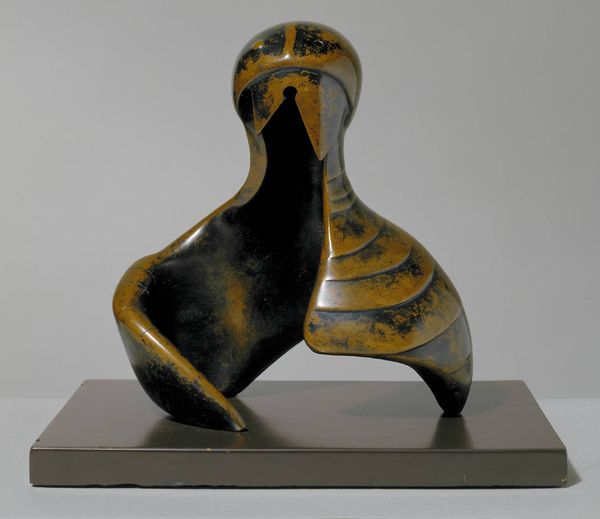
Dimensions: 6 1/4 x 11 1/2 x 6 1/4 in. (15.9 x 29.2 x 15.9 cm)
Copyright: No Copyright - United States
John B. Flannagan made "The New One" out of granite, sometime before his death in 1942. The sculpture represents a figure curled in on themselves, fetal and compact. The use of granite is interesting; its density and weight give the sculpture a feeling of permanence and stability, like a boulder weathered by time. Flannagan has left much of the stone unpolished, allowing the natural texture of the granite to show through. The rough, granular surface contrasts with the smooth, rounded forms of the figure, highlighting the tension between the raw material and the artist's shaping hand. Flannagan was deeply interested in the direct carving method. Unlike traditional sculptors who relied on assistants to execute their designs, Flannagan preferred to work directly with the stone, allowing the material to guide his artistic process. This approach aligns him with the broader Arts and Crafts movement, which emphasized the value of handcraftsmanship and the integrity of materials. By embracing the inherent qualities of the granite, and by leaving traces of his process visible, Flannagan blurs the line between sculpture and pure material presence.
Comments
minneapolisinstituteofart about 2 years ago
⋮
The figure of an embryo shortly before birth or a newborn baby incised in a large bluestone is a perfect example of the technique of 'direct carving'. Instead of transferring a preconceived image developed in clay, wood, or drawings into the stone, the artistic process instead is seen as a dialogue between the sculptor and the stone, as a respectful interaction between the artist and nature. Metaphorically, the sculptor acts as a midwife who liberates the image enclosed in the stone, following hints of its shape, structure, color and texture. John Bernard Flannagan, who was born and raised in Fargo, North Dakota, studied at the Minneapolis Institute of Art from 1916-1919. Later living in New York and Ireland, Flannagan became a champion of direct carving, a principle adopted by many modernist sculptors of the first half of the 20th century, especially in England. Other protagonists of this technique were Jacob Epstein and Henry Moore.
Join the conversation
Join millions of artists and users on Artera today and experience the ultimate creative platform.
